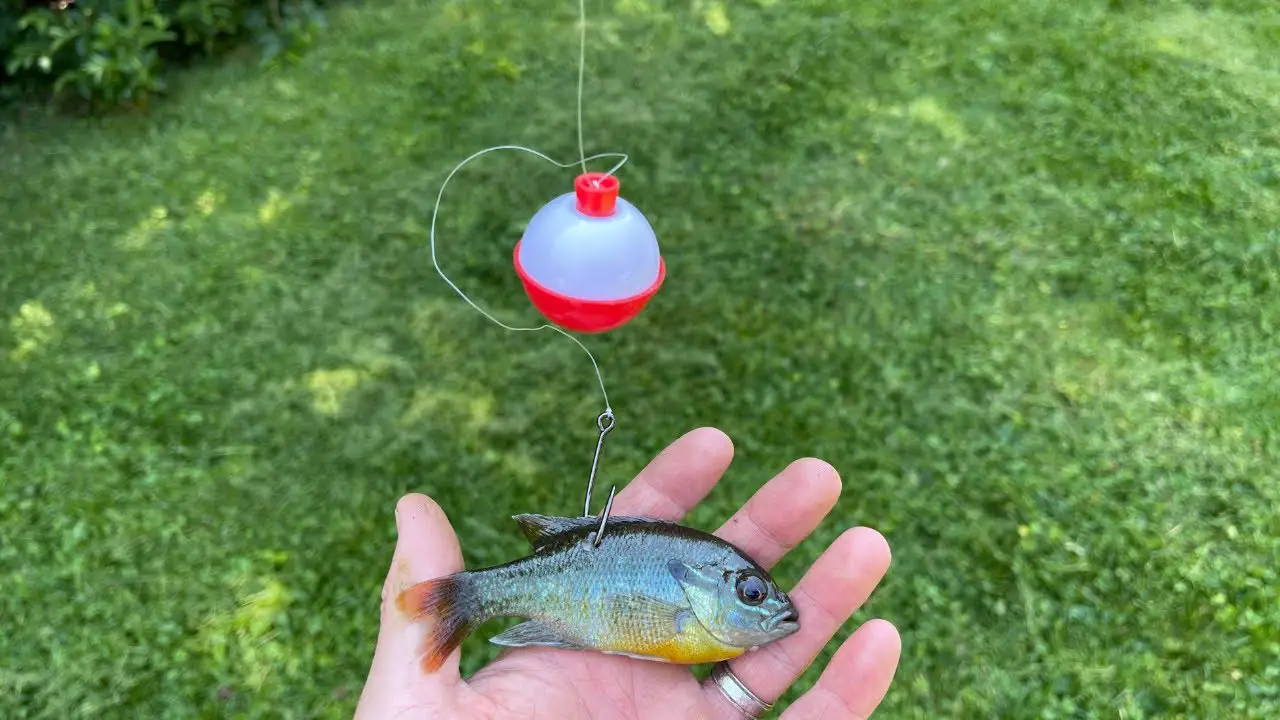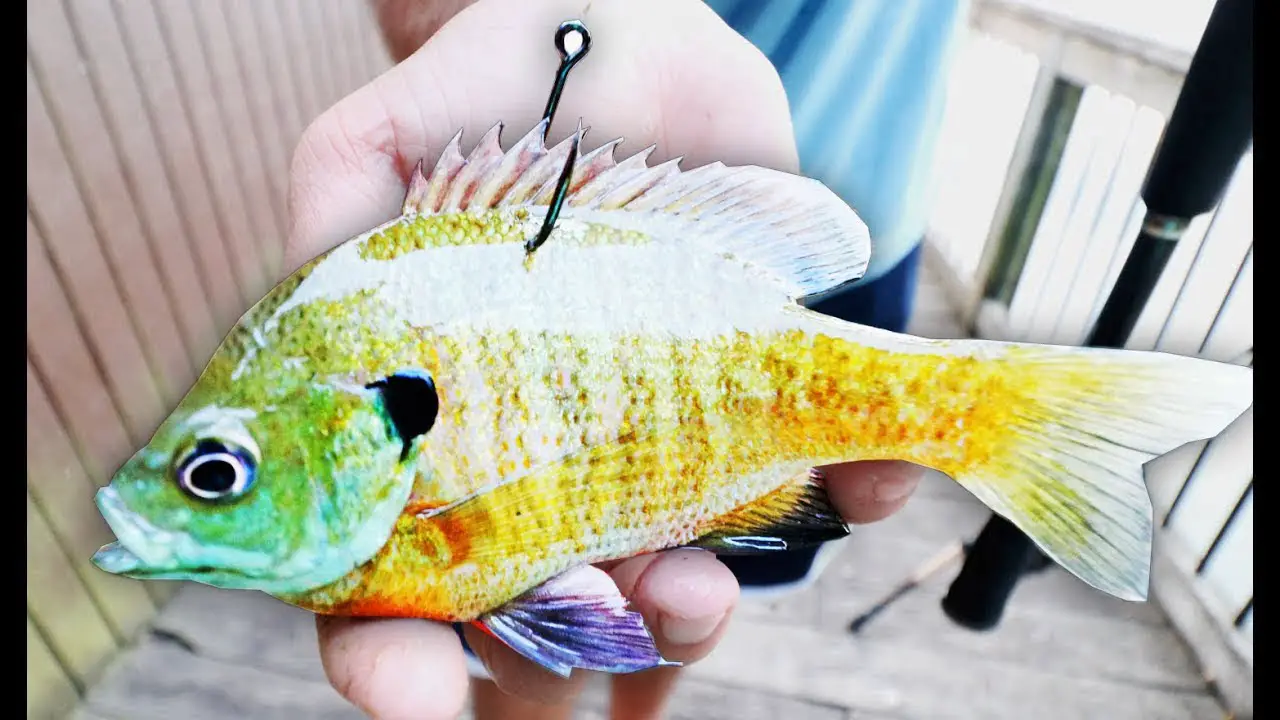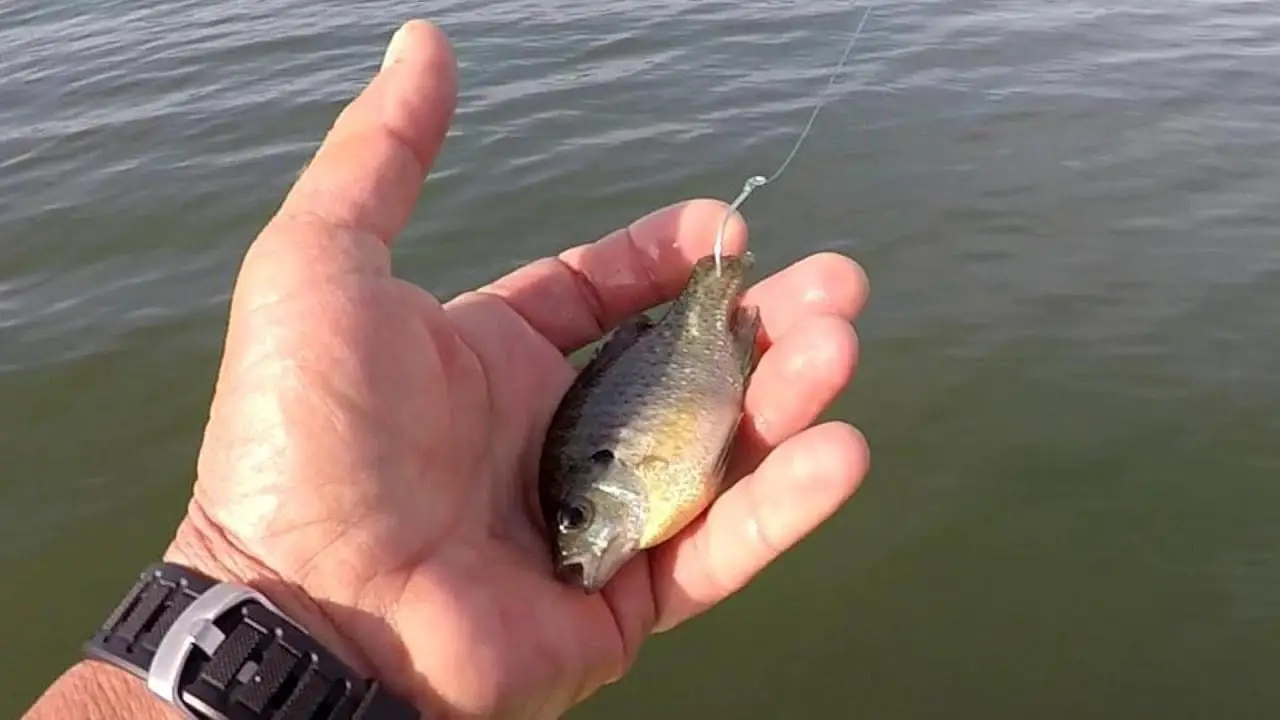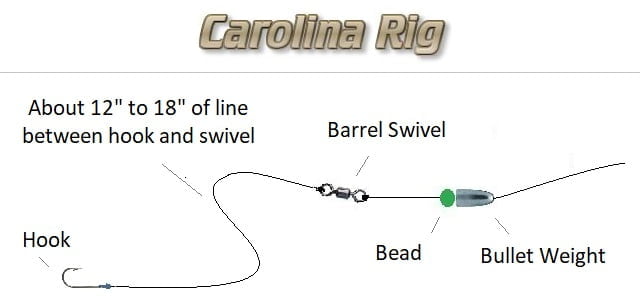If you’ve ever wondered how to effectively catch bass using live bluegill, look no further. In this article, you’ll discover the secrets to rigging live bluegill in a way that will entice even the most elusive bass. Whether you’re a seasoned angler or a beginner in the world of fishing, we’ve got you covered. Get ready to learn the step-by-step process to rigging live bluegill and increase your chances of reeling in that trophy bass you’ve been dreaming of.

Choosing the Right Bluegill
When it comes to rigging live bluegill for bass fishing, selecting the right bluegill is crucial. You want to choose a bluegill that is healthy and suitable for bait. There are two key factors to consider when choosing the right bluegill: size and health.
Selecting the Right Size
The size of the bluegill you choose will depend on the size of the bass you are targeting. In general, it is advisable to select a bluegill that is around 4-6 inches in length. This size is ideal because it is large enough to attract larger bass, but not so big that it becomes difficult for the bass to swallow.
Examining the Health of the Bluegill
The health of the bluegill is equally important as its size. You want to ensure that the bluegill you choose is lively and free from any visible signs of illness or injury. Look for bluegills that have clear eyes, vibrant coloration, and active swimming behavior. Avoid bluegills with discolored skin, cloudy eyes, or any signs of disease. A healthy bluegill will not only be more attractive to bass but will also have better chances of surviving after being used as bait.
Preparing the Bluegill for Rigging
Before you can rig the bluegill, there are a few preparation steps you need to follow. These steps will not only make rigging easier but also enhance the bait’s effectiveness.
Removing Scales and Fins
To improve the movement and swimming action of the bluegill, it is recommended to remove the scales and fins. You can do this by gently scraping the scales off the bluegill’s body using a knife or a fish scaler. Be careful not to apply too much pressure to avoid damaging the bluegill’s skin. After removing the scales, you can trim the fins using a pair of scissors. This step will help reduce any resistance in the water, allowing the bluegill to move more naturally.
Trimming the Tail
Another essential step in preparing the bluegill for rigging is trimming the tail. By trimming the tail, you enhance the bait’s movement, making it more enticing to bass. Use a sharp pair of scissors to carefully trim the tail of the bluegill. Start by cutting off the tail fin in a diagonal shape, tapering it down to a point. This will give the bluegill a more lifelike swimming action, attracting bass to strike.
Securing the Hooks
To ensure that your bluegill stays securely rigged on the hooks, it’s important to properly secure them in place. One effective method is to use a hook through the lower jaw and upper lip of the bluegill. This placement allows the bluegill to swim naturally and gives it enough freedom of movement to attract bass. Make sure the hooks are securely embedded in the bluegill, but be cautious not to injure or harm the baitfish in the process.
Adding Weight to the Rig
Depending on the fishing conditions and depth you are targeting, you may need to add weight to the rig to help the bluegill sink to the desired level. You can accomplish this by using split-shot weights and attaching them to the line above the hook. Experiment with different weights to find the right balance that allows the bluegill to swim at the desired depth while still appearing natural.

Rigging Options for Live Bluegill
When rigging live bluegill, there are several popular methods that you can choose from. Each rigging option offers different advantages and is suitable for different fishing scenarios. Here are a few common rigging options to consider:
Carolina Rig
The Carolina rig is a versatile setup that is suitable for various fishing conditions. It consists of a bullet weight, bead, slip knot, barrel swivel, leader, and hook. The Carolina rig allows the bluegill to swim freely and cover a wide area, making it an excellent choice for targeting bass that are scattered or suspending.
Texas Rig
The Texas rig is another popular option for rigging live bluegill. It involves a bullet weight, hook, and weedless rigging. The Texas rig offers excellent weedless capabilities, allowing you to fish in areas with heavy cover without getting snagged. This rig is ideal for fishing in dense vegetation or areas where bass are known to hide.
Float Rig
If you prefer fishing with a float or bobber, the float rig is a great option for rigging live bluegill. This setup includes a slip bobber, swivel, leader, and hook. The float rig allows you to suspend the bluegill at a predetermined depth, making it an effective technique for targeting bass in shallow waters or near structures.
Live-Lining Technique
The live-lining technique is a popular method used to rig live bluegill. It involves attaching a slip sinker rig with a circle hook and leader. This setup allows the bluegill to swim naturally and freely, mimicking its natural behavior. The live-lining technique is particularly effective when targeting larger, more cautious bass that require a more realistic presentation.
Setting Up a Carolina Rig
The Carolina rig is a highly effective and versatile setup for rigging live bluegill. Here’s a step-by-step guide on how to set up a Carolina rig:
Selecting the Right Tackle
To set up a Carolina rig, you’ll need a few essential pieces of tackle. Start by selecting a medium to heavy action fishing rod with a spinning or baitcasting reel. Match the rod and reel with a suitable fishing line, typically monofilament or fluorocarbon in the range of 10-20 lb test.
Attaching a Bullet Weight
Begin by threading a bullet weight onto the main fishing line. The weight should be heavy enough to allow for proper casting while still allowing the bluegill to swim naturally. The weight is typically placed above a bead to help protect the knot and reduce line abrasion.
Adding a Bead and Slip Knot
After the bullet weight, slide a small plastic bead onto the line. This bead will protect the knot from being damaged by the weight. Next, tie a slip knot just below the bead. The slip knot will serve as a stopper to keep the weight and bead in place.
Tying on a Barrel Swivel and Leader
Below the slip knot, tie a barrel swivel onto the line. The barrel swivel serves as a connection point between the main line and the leader. Attach a leader line of suitable length, usually around 2-3 feet, to the other end of the barrel swivel. The leader should be made of a strong and abrasion-resistant material, such as fluorocarbon or monofilament.
Attaching the Hook
Finally, tie on the hook to the end of the leader using a suitable knot, such as a Palomar knot or improved clinch knot. The hook size will depend on the size of the bluegill and the bass you are targeting. Ensure that the hook is securely tied and properly positioned for optimal hooksets.

Rigging with a Texas Rig
The Texas rig is a versatile and effective method for rigging live bluegill. Here’s how to set up a Texas rig:
Choosing the Suitable Gear
To set up a Texas rig, you’ll need a fishing rod and reel combination suitable for medium to heavy action fishing. Select a rod and reel that matches the line and the weight of the bluegill you are using as bait. Spinning or baitcasting reels are commonly used for Texas rigging.
Setting Up a Bullet Weight
Begin by selecting a bullet weight that matches the fishing conditions and the depth you are targeting. Thread the bullet weight onto the fishing line and allow it to slide freely. The bullet weight should be heavy enough to help the bluegill sink to the desired depth but not too heavy that it hampers the bait’s natural movement.
Joining the Hook with a Snell Knot
Next, tie a snell knot to attach the hook to the fishing line. The snell knot allows the hook to face upward and helps increase hook-up ratios when the bass strikes. Ensure that the knot is tight and secure to prevent any possible slippage when setting the hook.
Using a Leader or Fluorocarbon Line
While not necessary, using a leader or fluorocarbon line for your Texas rig setup can provide additional benefits. Fluorocarbon is less visible underwater and can help increase your chances of getting a bite. If choosing to use a leader, attach it to the main fishing line using a suitable knot, such as a uni-to-uni knot or a barrel swivel.
Utilizing a Float Rig
When you want to suspend the bluegill at a predetermined depth, a float rig is an excellent choice. Follow these steps to set up a float rig for live bluegill:
Selecting the Appropriate Fishing Line
For a float rig setup, choose a fishing line that is strong enough to handle the weight of the bluegill and the potential size of the bass you are targeting. Monofilament or fluorocarbon lines in the range of 8-12 lb test are commonly used for float rigging.
Adding a Slip Bobber
Slide a slip bobber onto the main fishing line. A slip bobber allows you to adjust the depth at which the bluegill is suspended. It is important to select a slip bobber that is appropriate for the weight of the bluegill and the desired fishing depth. Ensure that the slip bobber is securely attached to the line.
Attaching a Swivel and Leader
Below the slip bobber, tie a small barrel swivel to the fishing line. The barrel swivel acts as a connection point between the main line and the leader line. Attach a leader line of suitable length to the other end of the barrel swivel. The leader should be between 2-4 feet long and made of a strong and durable material.
Securing the Hook
At the end of the leader, tie on the hook using a suitable knot, such as a Palomar knot or improved clinch knot. The hook size should be appropriate for the size of the bluegill and the bass you are targeting. Ensure that the hook is securely tied and positioned properly for optimal hooksets.

Live-Lining Technique for Bluegill Rigging
The live-lining technique is an effective method for rigging bluegill, particularly when targeting larger, more cautious bass. Here’s how to rig live bluegill using the live-lining technique:
Selecting the Proper Fishing Rod and Reel
To effectively utilize the live-lining technique, select a fishing rod and reel combination suitable for medium to heavy action fishing. The rod should have enough backbone to handle potential larger bass and provide the necessary sensitivity.
Using a Slip Sinker Rig
The key component of the live-lining technique is the slip sinker rig. Begin by threading a slip sinker onto the fishing line, followed by a bead for protection. Tie a swivel to the end of the line and attach a leader of suitable length to the other end of the swivel. The leader should be made of a strong and abrasion-resistant material.
Attaching a Circle Hook and Leader
Tie a circle hook to the end of the leader using a suitable knot, such as a Palomar knot or improved clinch knot. Ensure that the hook is properly secured and positioned for optimal hooksets. The size of the hook will depend on the size of the bluegill and the bass you are targeting.
Casting and Retrieving Techniques
Once you have your bluegill rig properly set up, it’s essential to use effective casting and retrieving techniques to attract bass and entice them to strike. Here are a few techniques to consider:
Casting Near Structure
Bass are often found near structure such as fallen trees, rocks, or weed beds. When casting, aim for areas near these structures where bass are likely to be hiding. Accurate casting will increase your chances of getting your bluegill rig in front of the bass.
Working the Bait with Twitches and Pauses
To create a lifelike presentation, work the bluegill bait with twitches and pauses. Jerk the rod tip to make the bluegill dart and swim erratically, mimicking a distressed or injured baitfish. Vary the speed and intensity of your twitches and pauses to find the right combination that triggers a response from the bass.
Slow Retrieval Technique
In some situations, a slow retrieval technique can be highly effective. Retrieve the bluegill rig at a slow and steady pace, keeping the bluegill swimming naturally and enticingly. This technique is particularly useful when fishing in colder water or when bass are in a less aggressive feeding mood.

Fishing Strategies and Tips
To increase your chances of success when rigging live bluegill for bass, consider the following fishing strategies and tips:
Choosing the Right Fishing Spot
Familiarize yourself with the body of water you are fishing and look for areas that are known to hold bass. These can include points, drop-offs, submerged structures, or weed beds. Understanding the underwater topography and bass behavior in the specific fishing spot will help you identify the best areas to target.
Understanding Bass Behavior
Having a good understanding of bass behavior can greatly enhance your success when rigging live bluegill. Bass are known to be opportunistic predators and are attracted to vulnerable or injured baitfish. By mimicking the movements and actions of natural prey, you can increase the likelihood of attracting bass and triggering a strike.
Timing and Weather Considerations
Consider the time of day and weather conditions when planning your fishing trips. Bass are more active during low light conditions, such as early morning or late afternoon. Additionally, factors such as water temperature, barometric pressure, and cloud cover can also affect bass activity. Pay attention to these factors and adjust your fishing techniques accordingly.
Observing the Water Conditions
Carefully observe the water conditions and adapt your bluegill rigging techniques accordingly. Factors such as water clarity, current, and depth can all influence how bass respond to your bait. Experiment with different colors, sizes, and depths to find the combination that gets the most attention from bass in the specific water conditions.
Proper Care and Handling of Bluegill
As responsible anglers, it’s important to ensure the proper care and handling of bluegill before, during, and after fishing. By following these guidelines, you can help preserve the health and well-being of the bluegill population:
Handling Bluegill with Wet Hands
When handling bluegill, always wet your hands first. This helps prevent unnecessary damage to their delicate skin and scales. Wet hands also offer a better grip, reducing the chances of the bluegill slipping out of your grasp. Minimizing stress and harm to the bluegill is not only ethical but also increases their chances of survival if released.
Using a Proper Landing Net
Using a landing net is an effective way to safely capture bluegill without causing harm or unnecessary stress. Opt for a landing net with soft, knotless mesh to prevent their fins or gills from getting tangled or damaged. Avoid lifting the bluegill out of the water using their mouth or gills, as this can cause severe injury.
Releasing the Bluegill
If you choose to release the bluegill after catching them, it is important to do so properly to maximize their chances of survival. Handle the bluegill gently and minimize the time it spends out of the water. If necessary, use a fish grip or needle-nose pliers to carefully remove the hook. Hold the bluegill in the water and allow it to swim away on its own, ensuring it has fully recovered before releasing it.
By following these proper care and handling practices, you can contribute to the sustainability of bluegill populations and maintain their availability as bait for future fishing trips.




